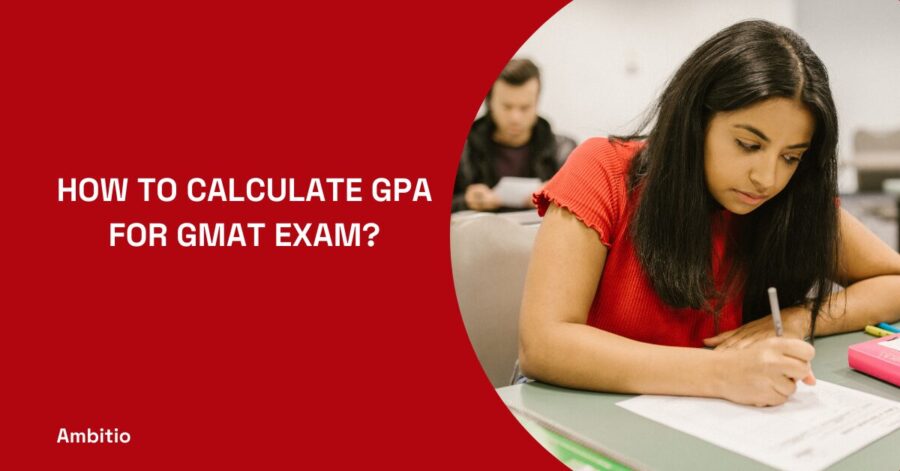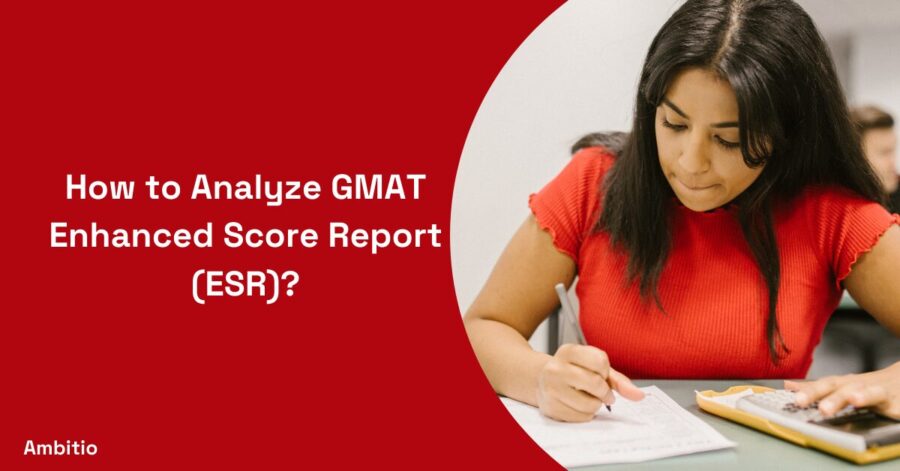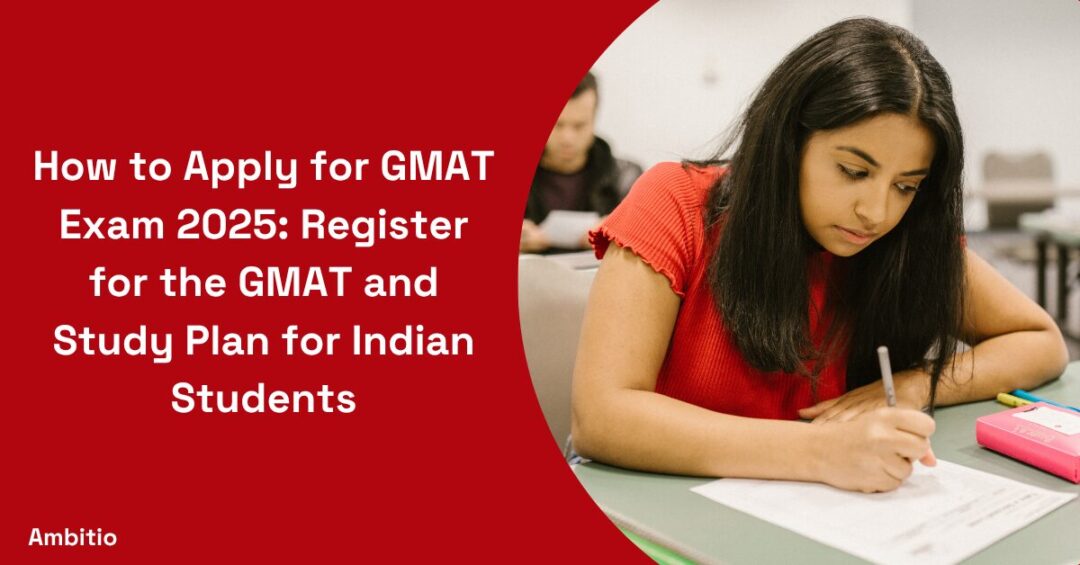3 September 2024
10 minutes read
GMAT Reading Comprehension Tips

Key Takeaways
- Skim strategically. Quick overview first, then focus on first/last sentences to grasp main ideas faster.
- Engage actively. Take smart notes, practice critical thinking, and predict answers to boost comprehension.
- Master question types. Familiarize yourself with different RC question styles to tailor your approach effectively.
- Balance speed and understanding. Develop a steady reading pace and use time-saving techniques without sacrificing accuracy.
Struggling with GMAT Reading Comprehension? You’re not the only one. This section trips up a lot of test-takers, even those who consider themselves strong readers. The time crunch and unfamiliar topics can make anyone sweat.
But here’s a secret: Reading Comp doesn’t have to be your weak spot. With some smart tactics, you can turn it into a strength. In this post, we’ll explore practical tips to boost your score – no fancy tricks, just solid strategies that work. Ready to make Reading Comp your ally? Let’s dive in.
How to improve GMAT RC – GMAT Reading Comprehension Tips and Strategies

GMAT exam has plenty of benefits. Cracking the GMAT can be a tad bit challenging but once you understand the importance of the exam and the doors it open, you can justify the efforts you put into it. If you are on your GMAT prep path and is stuck on reading comprehension, here are a few tips that can help you with gaining a GMAT max score, so take notes.
Skim first, read passage later
Before you read the GMAT reading comprehension passage, skim it quickly. Read the entire passage later. This gives you a general idea of the topic and structure. Look at the first sentence of each paragraph and any bold or italicized text. This is how you manage GMAT time. This strategy helps you grasp the main idea faster and sets you up for a more focused full read. You can choose a GMAT beginner’s guide to help you get started with the process.
Focus on the first and last
The first and last sentences of each paragraph often contain key information. The first sentence usually introduces the paragraph’s main point, while the last often concludes or transitions to the next idea. Pay extra attention to these when you read the passage. This technique helps you identify the main point and follow the author’s argument.
Identify the main point
Every RC passage has a central idea. Try to summarize the author’s main argument in one sentence. This helps with main idea and inference questions. Ask yourself, “What’s the author’s primary purpose?” This skill is crucial for GMAT focus and will help you answer questions more accurately.
Take strategic notes
As you read, jot down brief notes, but don’t overdo it. Focus on key points, not every detail. This helps you answer questions without constantly going back to the passage. Your notes might include main ideas, important facts, or the author’s tone. This strategy is especially helpful for longer passages. Choose the right GMAT books for your practice as well.
Understand question types
Familiarize yourself with common GMAT RC question types: main idea, inference, detail, and tone questions. Each requires a different approach. For example, inference questions ask you to draw conclusions based on information inferred from the passage, while detail questions require you to locate specific information. You must also understand that GMAT is an adaptive test and plan your strategy accordingly.
Eliminate wrong answers
Often, it’s easier to spot incorrect answer choices than to immediately find the right one. Cross out obviously wrong options to improve your odds. This strategy is particularly useful when you’re unsure about the correct answer. Remember, you only need to find one correct answer, not justify why the others are wrong.
Refer back smartly
Don’t rely solely on memory. For detail questions, go back to the specific part of the passage mentioned. For inference questions, review relevant sections. This technique helps you avoid careless mistakes and ensures your answers are based on what’s actually in the passage, not what you think you remember.
Watch for tone and author attitude
Pay attention to the author’s tone and perspective. This helps with inference and tone questions, which are often tricky. Is the author neutral, critical, supportive? Understanding the author of the passage’s attitude can help you answer questions about their viewpoint or purpose.
Practice active reading
Engage with the text. Ask yourself questions as you read: “What’s the author’s point here?” “How does this paragraph relate to the previous one?” This improves comprehension and recall. Active reading helps you stay focused and makes it easier to answer questions later.
Time yourself, but stay flexible
While timing is crucial on the GMAT, don’t rush through passages. It’s better to thoroughly understand fewer passages than to skim many and guess on questions. Practice reading passages within time constraints, but be willing to adjust your pace based on the difficulty of the text. Do a lot of GMAT question papers for practice.
Remember, improving your GMAT RC skills is a key part of your overall GMAT study plan. Deciding the GMAT order selection also plays a key role in the exam success. Regular practice with GMAT-style passages is essential. Try to read challenging material daily, whether it’s academic journals, business publications, or GMAT prep materials. This will help you get comfortable with the types of passages you’ll see on the GMAT exam.
As you practice, focus on your weaknesses. If you struggle with inference questions, for example, do extra practice with those. If you find yourself running out of time, work on your skimming and note-taking skills.
Finally, don’t forget that RC is just one part of the GMAT verbal section. Make sure you’re also practicing critical reasoning and sentence correction questions as part of your GMAT prep time. A balanced approach will help you maximize your verbal score on test day. This is how you beat the GMAT.
GMAT Reading Comprehension Sample Practice Questions

1. Passage: X particles are a class of subatomic particles that have been the focus of intense research in particle physics over the past few decades. These particles were first theorized in the 1970s as a result of advances in quantum field theory and our understanding of the fundamental forces of nature.
The existence of X particles was experimentally confirmed in the 1980s with the development of new particle accelerators capable of producing them. These early experiments also revealed some of the key properties of X particles, such as their short half-life of only 10^-22 seconds, making them very difficult to detect.
The discovery of X particles built upon earlier work on Y particles, which preceded and informed the development of X particle theory. Scientist Z, in particular, made significant contributions to the understanding of X particles through a series of landmark experiments in the 1990s. Z’s work helped advance the field and paved the way for the next generation of X particle research.
Today, X particles are a crucial component of the Standard Model of particle physics, our best theory for describing the fundamental constituents of matter and the forces that govern their interactions. While the Standard Model has been remarkably successful in predicting and explaining experimental results, there are still many open questions and areas for further investigation when it comes to X particles.
Ongoing research aims to refine our theoretical models of X particles, explore their potential applications, and push the boundaries of detection technology to enable more precise measurements of their properties. As our knowledge of X particles continues to grow, it promises to yield new insights into the nature of the universe at the most fundamental level.
Questions:
The primary purpose of the passage is to:
(E) Summarize the current state of knowledge in a field
According to the passage, which of the following is a characteristic of X particles?
(D) They have a relatively short half-life
The author mentions the discovery of Y particles primarily in order to:
(A) Provide historical context for the development of X particle theory
The author discusses the work of scientist Z primarily to:
(B) Provide an example of a researcher who made important contributions to the field
Which of the following can be inferred from the passage about the future of X particle research?
(A) Advances in detection technology will make X particles easier to study
Explanations
The passage provides an overview of the key developments and current understanding in the field of X particle physics. It does not argue for a specific position, describe a historical event in depth, explain a research method, or analyze the implications of a new technology. The passage aims to summarize the current state of knowledge in the field.
The passage states that “X particles have a half-life of only 10^-22 seconds, making them very difficult to detect.”
This directly supports the answer choice (D).
The other answer choices are not mentioned as characteristics of X particles in the passage.
The passage states that the discovery of Y particles “preceded and informed the development of X particle theory.” This indicates that the author mentions Y particles to provide historical background and context for the main topic of X particles. The other answer choices are not supported by the way the author uses the information about Y particles in the passage.
The passage states that scientist Z “made significant contributions to the understanding of X particles” and that their work “helped advance the field.” This indicates that the author is using Z as an example of an important contributor to the research on X particles, rather than for any of the other purposes listed in the answer choices.
The passage notes that X particles are “very difficult to detect” due to their short half-life. This implies that if detection technology improves, it would make X particles easier to study, supporting answer choice (A). The passage does not provide enough information to confidently infer any of the other answer choices about the future of X particle research.
2. Passage: Recent studies suggest that reducing meat consumption can contribute to better health and well-being. However, some nutritionists argue that completely eliminating meat from diets may lead to nutrient deficiencies if not carefully managed.
Question: What is the main idea of this passage?
A) Vegetarianism is the healthiest diet choice.
B) Meat consumption should be completely eliminated.
C) Reducing meat intake may have health benefits, but complete elimination requires careful planning.
D) Nutritionists agree on the benefits of meat-free diets.
Solution: C
Explanation: The passage presents a balanced view, stating that reducing meat can be beneficial, but also noting potential risks of complete elimination. Option C accurately captures this nuanced perspective, making it the correct answer.
This sample demonstrates how GMAT reading comprehension questions test your ability to identify main ideas and analyze short passages. Practice with various question types to improve your skills for test day.
Best Practices to Improve GMAT Reading Comprehension
Improving GMAT Reading Comprehension requires unique strategies beyond the common ones. If you have already given GMAT a try and is preparing for your reattempt, you need special GMAT retake strategy steps to ace the exam. Here are some best practices that incorporate all the specified keywords:
1. Pre-Read the Questions
Questions on the GMAT Focus: Before diving into the passage, quickly glance at the questions. This gives you an idea of what to look for while reading, allowing you to focus on pertinent details and saving time.
2. Build Your Vocabulary
GMAT Verbal Section: A robust vocabulary helps in quickly understanding complex passages. Regularly practice and learn new words, focusing on those commonly found in academic texts. This is how you can get a GMAT 750 score or above.
3. Summarize Paragraphs
RC Strategy: As you read, pause at the end of each paragraph to mentally summarize its content. This helps in retaining the structure and main ideas of the passage, making it easier to answer questions later.
4. Integrate Critical Thinking
Verbal Experts: Treat each passage as a critical thinking exercise. Ask yourself why the author wrote the passage, what their assumptions are, and how each paragraph supports the main argument. This deep engagement aids in answering more complex questions. Make sure to have an idea of GMAT lifetime limit to get your plans straight.
5. Use Context Clues
Reading Strategies: When encountering unfamiliar words or complex sentences, rely on context clues within the passage. This approach can help you infer meanings and better understand the author’s message.
6. Engage with Multiple Sources
GMAT Students: Broaden your reading practice by engaging with various types of texts—academic journals, opinion pieces, scientific articles. This exposure helps you become more adaptable to different writing styles and tones.
7. Leverage Passage Mapping
GMAT Practice: Develop a mental or physical map of the passage’s structure, noting key points and arguments. This strategy helps in quickly locating information when answering questions, especially under time pressure.
8. Predict Answers
Types of Questions: Before looking at the answer choices, try to predict the answer based on your understanding of the passage. This technique helps in staying focused and reduces the chances of being misled by incorrect options.
9. Rephrase Questions
Questions Ask You to Apply: Rephrase the questions in your own words to ensure you fully understand what is being asked. This method clarifies the task and can lead to more accurate answers. For this to be done effectively, have a good idea of GMAT format as well.
10. Maintain a Balanced Reading Pace
GMAT Courses: Avoid rushing through the passage. Instead, maintain a steady pace that allows you to comprehend the material without sacrificing speed. This balance is crucial for maximizing both accuracy and efficiency.
11. Analyze Answer Choices Carefully
Answer Choice That Best: When reviewing answer choices, consider each one critically. Look for subtle differences that distinguish the correct answer from the distractors. Often, incorrect answers will include extreme language or misinterpret the passage.
12. Use Practice Tests Wisely
Target Test Prep GMAT: Regularly take full-length practice tests under timed conditions. This helps you build endurance and get accustomed to the test format, ultimately improving your verbal score.
13. Reflect on Author’s Purpose
Style and Tone Questions: Constantly ask yourself why the author wrote the passage. Understanding the author’s purpose and tone can guide you in answering both content and inference questions accurately.
14. Develop a Distraction Management Plan
Losing Focus: Create strategies to minimize distractions during the test. This might include practicing mindfulness techniques, taking brief mental breaks, or using noise-canceling headphones during study sessions.
15. Stay Informed on Test Updates
Taking the GMAT: Keep abreast of any changes in the GMAT format or question types by regularly visiting official GMAT resources. Understanding the latest updates can give you an edge in your preparation.
Conclusion
Knowing everything about GMAT Reading Comprehension can transform a potential weak spot into a strong asset on test day. By integrating these unique strategies, such as pre-reading questions, building your vocabulary, summarizing paragraphs, and leveraging critical thinking, you can significantly boost your confidence and performance in the GMAT verbal section. Understand GMAT exam is for what purpose as well.
Consistent practice with GMAT-style passages and a balanced approach to studying all verbal components will set you up for success. Keep refining your skills, stay adaptable, and approach each passage with a strategic mindset. Happy studying, and good luck on your GMAT journey!
Empower your GMAT journey with Ambitio’s expert strategies and resources. Our platform is designed to guide you to exceptional results, offering a blend of content mastery, practice opportunities, and analytical techniques that elevate your preparation and performance.
FAQs
How much time should I spend on each Reading Comprehension passage?
Aim for about 3-4 minutes to read the passage and 1-1.5 minutes per question. However, this can vary based on passage length and complexity. Practice timing yourself to find your optimal pace.
Is it necessary to read the entire passage before answering questions?
Generally, yes. However, you can skim first to get an overview, then read more carefully. For some detail-oriented questions, you might only need to refer to specific parts of the passage.
How can I improve my reading speed for the GMAT?
Practice active reading daily with GMAT-like materials. Focus on grasping main ideas quickly. Use techniques like skimming and identifying topic sentences. Regular timed practice will naturally increase your speed over time.
What’s the best way to handle unfamiliar topics in RC passages?
Don’t panic about unfamiliar subjects. Focus on understanding the passage’s structure and main ideas. Use context clues to grasp unfamiliar terms. Remember, all necessary information is usually provided within the passage.
Are there specific types of outside reading materials that can help with GMAT RC preparation?
Yes. Read academic journals, business publications, and scientific articles. The Economist, Scientific American, and academic papers in various fields can help you get comfortable with complex, GMAT-like texts.
How important is vocabulary for GMAT Reading Comprehension?
While a strong vocabulary is helpful, it’s not crucial. The GMAT doesn’t test vocabulary directly. Focus more on understanding words in context and grasping the overall meaning of sentences and paragraphs.
Should I focus more on accuracy or speed when practicing RC questions?
Initially, focus on accuracy. Understand the passage and question types thoroughly. As you improve, gradually work on increasing your speed. Ultimately, you need to balance both for the actual test, but accuracy should always be the priority.

You can study at top universities worldwide!
Get expert tips and tricks to get into top universities with a free expert session.
Book Your Free 30-Minute Session Now! Book a call now




























